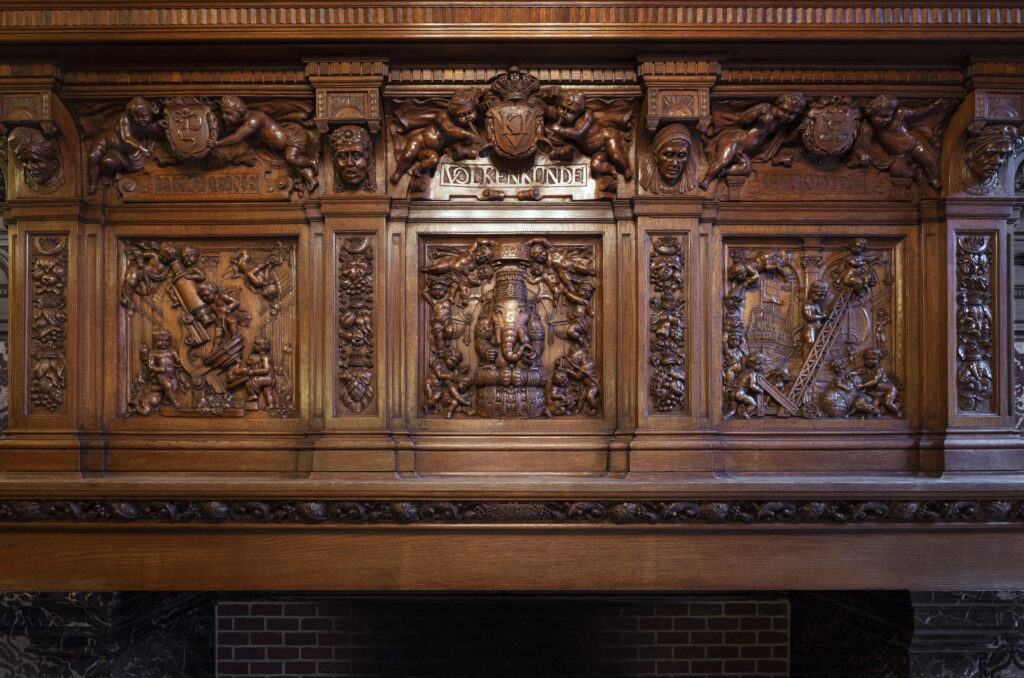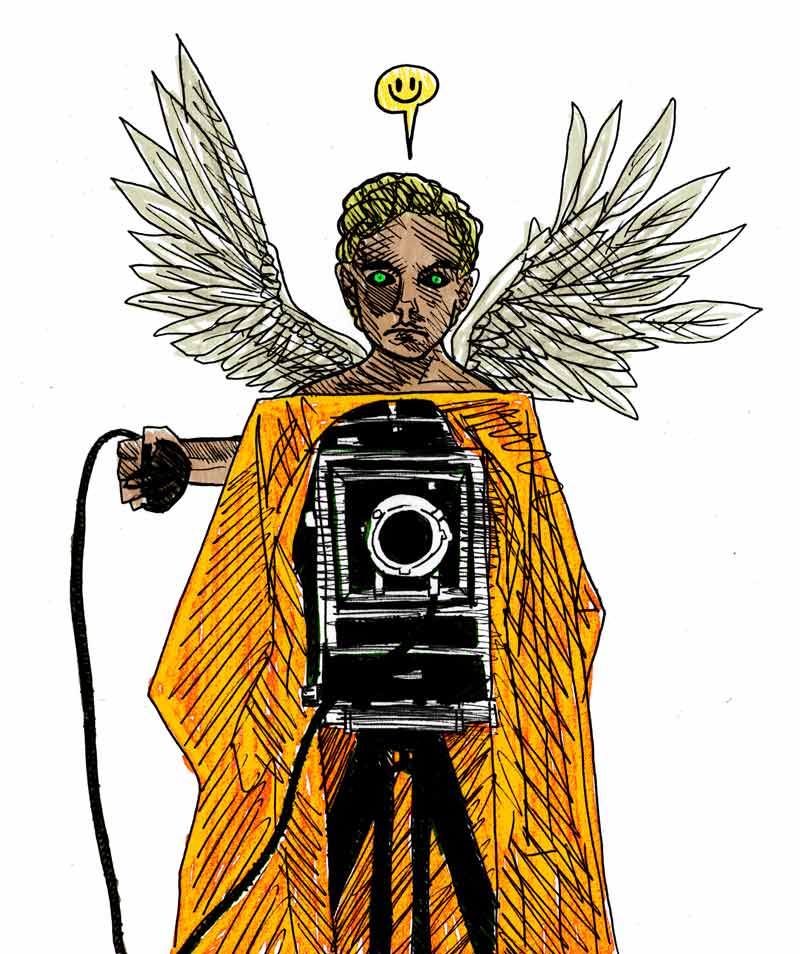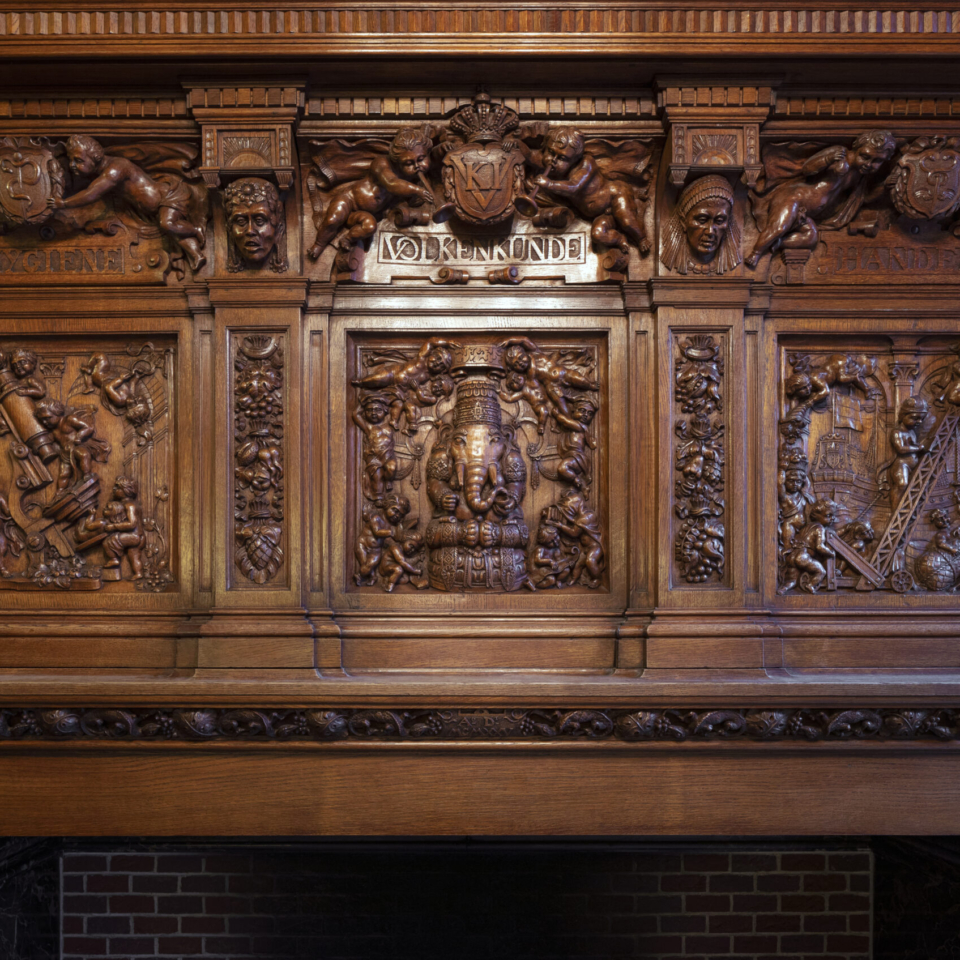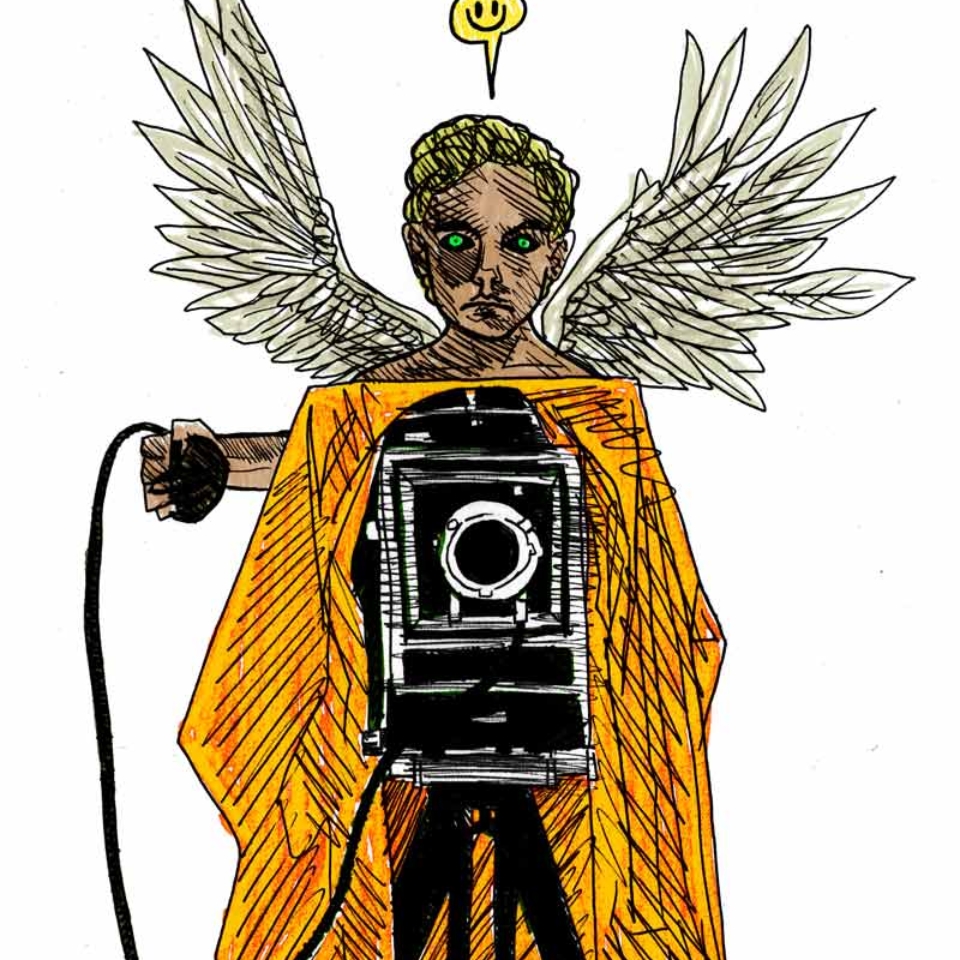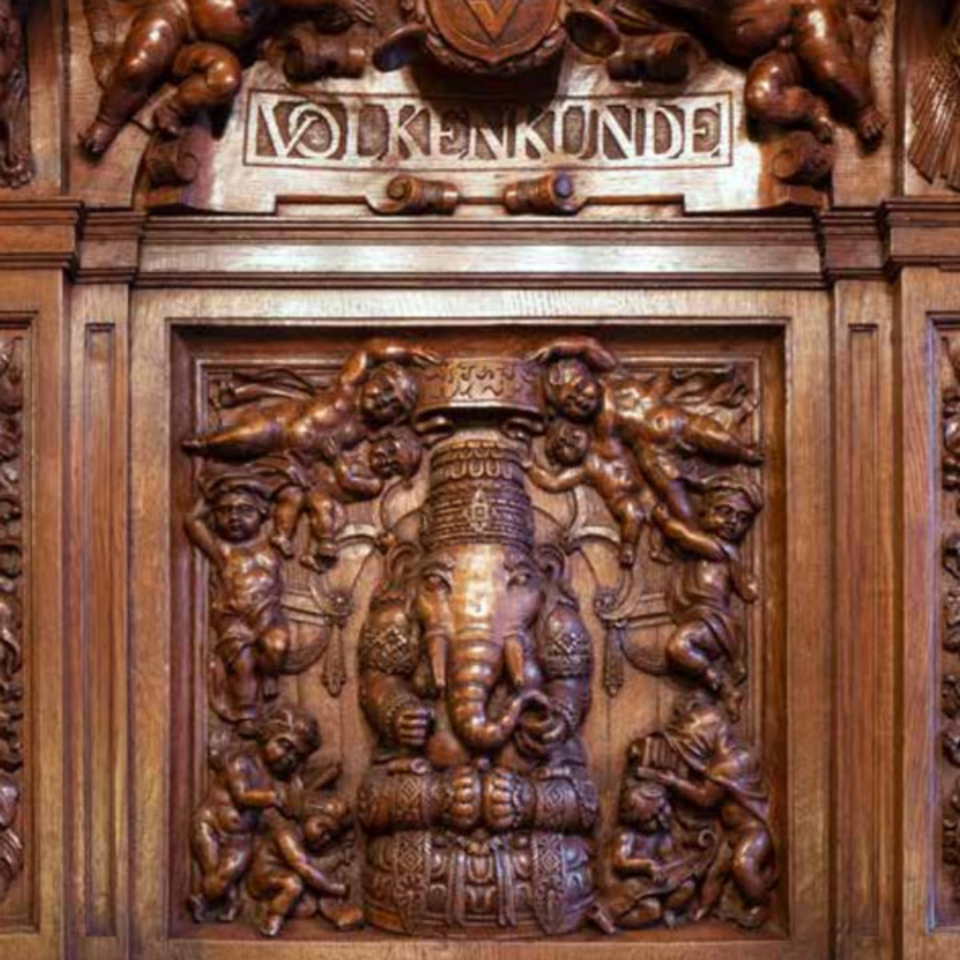The wood carvings above the fireplace refer to the Institute’s three departments: Trade, Ethnography and Tropical Hygiene.
The Ethnographic Department studied people, cultures and societies in the colonies. Do you see the angel with a camera? Photographs were important tools for visualising the colonial world and recording human differences. The Koloniaal Instituut worked to build an image collection from the start, even including movies. Photography also supported the discipline of anthropology. Physical anthropologists studied the people in the colonies, recording height, skin colour, shape of the skull and other physical characteristics. Cultural anthropologists used photographs to classify and study population groups and cultures.
At the time, such research was seen as pure, neutral science, but the measuring and recording of differences between people was used to inform racial and racist thinking. In the nineteenth century, there was a belief in a hierarchy of humanity, with the ‘most civilised and developed’ White Europeans at the top; such ideas are now debunked. Scientists attempted to prove these ideas in various ways, including through photography. The emphasis on visible differences in images and other media helped to preserve the colonial balance of power. Though race thinking has now completely been debunked scientifically, it still bears strong influences on societal relations.
